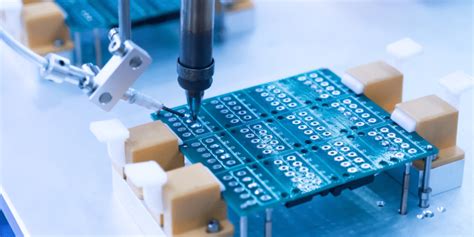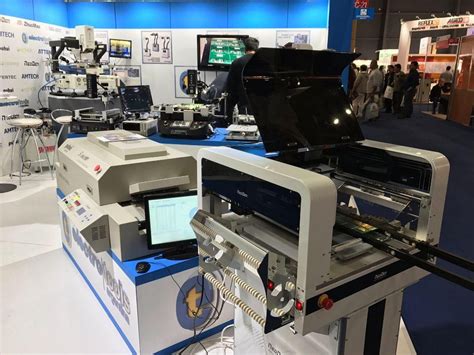Advancements in Flex PCB SMT Assembly Techniques and Benefits
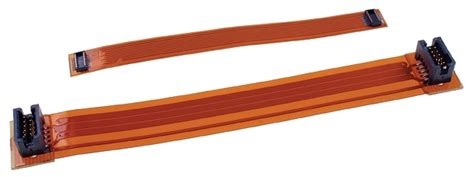
Key Takeaways
The advancements in flexible PCB SMT assembly techniques have significantly transformed the landscape of modern electronics manufacturing. As technology progresses, pcb assembly processes are increasingly emphasizing flexibility and efficiency, which are crucial for meeting the demands of contemporary devices. One of the notable innovations includes the development of advanced materials that enhance the durability and performance of flex PCBs, enabling industries to create lighter and thinner products without compromising on functionality.
Moreover, emerging techniques in surface mount technology (SMT) assembly allow for greater precision and speed, directly impacting production timelines and costs. This translates into substantial benefits for manufacturers as they can achieve higher yield rates while minimizing waste—an important aspect in today’s environmentally conscious market. The unique characteristics of flex circuits contribute to a reduction in overall device sizes, thereby promoting electronics miniaturization that meets consumer demand for compact designs.
Additionally, the cost-effectiveness of modern pcba methods cannot be overlooked. With innovations driving down expenses associated with production, suppliers are better positioned to offer competitive pricing while maintaining quality standards. As we look to the future, it is evident that the integration of flexible designs with pcb assembly methods will continue to play a pivotal role in spearheading advancements across various sectors within electronics manufacturing.
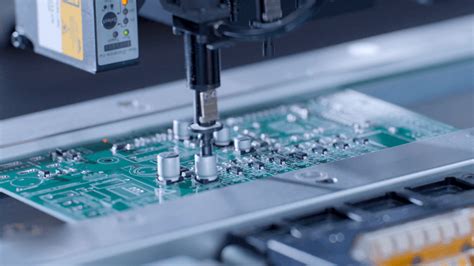
Introduction to Flex PCB SMT Assembly
Flex PCBs, or flexible printed circuit boards, play a vital role in modern electronics due to their adaptability and unique design options. The process of SMT assembly (Surface Mount Technology assembly) of these flexible circuits presents a formidable challenge and a myriad of possibilities for manufacturers. Flex PCBA not only enables intricate designs but also significantly enhances the performance characteristics of electronic devices.
Recent advancements in flex PCB SMT assembly have introduced innovative techniques that streamline the production process, allowing for faster turnarounds and improved yields. Particularly, the integration of automation in the assembly line has reduced manual handling errors and optimized placement accuracy, which is paramount when dealing with the intricate layouts of flex PCBs. Furthermore, companies are increasingly implementing advanced technologies such as laser cutting and high-precision printing for these assemblies, which elevate quality and reliability across various applications.
"Investing in state-of-the-art SMT assembly technologies is essential not just for performance but also for maintaining competitive advantage in the rapidly evolving electronics market."
The benefits of embracing these advancements are multifold: they not only lower production costs due to reduced material waste but also facilitate miniaturization trends in electronics design, enabling manufacturers to create slimmer and more compact devices. The evolution of pcba methods reflects a broader industry shift towards maintaining efficiency amidst rising demands for complex electronic functionalities in smaller footprints.
Overall, as manufacturers adapt to these cutting-edge flex PCB SMT assembly techniques, they position themselves at the forefront of innovation in the electronics landscape. This transition ultimately serves as a catalyst for both improving product performance and meeting evolving consumer expectations.
Innovations in Flexible PCB Design
The landscape of flexible PCB design is undergoing significant transformation, driven by the integration of modern technologies and innovative approaches. One of the key advancements is the adoption of advanced materials that enhance flexibility while ensuring durability. This has paved the way for more complex pcb assembly processes, where the intricate patterns and layouts can be realized without compromising performance. Additionally, innovations in design software allow engineers to create more intricate PCBA layouts with precision, enabling better optimization for space-constrained applications. As electronics continue to trend toward miniaturization, these design innovations provide critical solutions that allow for smaller device footprints while maintaining functionality. Furthermore, enhanced simulation tools facilitate testing and validation during the design phase, reducing prototyping costs and time. The drive for efficiency and performance in flexible PCBs is not only about meeting current industry standards but also about setting new benchmarks that redefine possibilities in modern electronics manufacturing. Ultimately, these advancements are instrumental in positioning flexible PCBs as a cornerstone in next-generation electronic devices.

Cutting-Edge SMT Assembly Techniques
The field of flexible PCB SMT assembly has witnessed remarkable advancements that cater to the growing demands of modern electronics. One of the most significant innovations in this realm is the integration of advanced robotic systems that enhance precision during the soldering process. These systems not only improve accuracy but also increase the speed of PCB assembly, thereby streamlining production workflows. Additionally, new thermal management techniques are being employed to ensure optimal performance during the assembly, which is crucial for maintaining the integrity of components on flex PCBs.
Furthermore, manufacturers are increasingly adopting environmentally friendly solder materials that minimize the impact on health and the environment without compromising quality. This shift not only meets regulatory requirements but also appeals to an eco-conscious market, showcasing a commitment to sustainable practices in PCBA.
Moreover, advancements in optical inspection technologies are enabling real-time monitoring throughout the SMT assembly process. This capability allows for immediate detection of faults and ensures high-quality outputs that meet stringent industry standards. As products become more compact and intricate, these cutting-edge techniques are indispensable for ensuring reliable connections and functionality in every assembled board.
In conclusion, these innovations in flexible PCB SMT assembly techniques are redefining efficiency and quality benchmarks in electronics manufacturing, paving the way for next-generation products that embrace both performance and sustainability.
Enhancing Efficiency in Production Processes
The realm of flexible PCB SMT assembly is witnessing rapid progress, particularly in improving production efficiency. One of the most significant advancements is the adoption of automated solutions, such as robotic arms and computer vision systems, which streamline the process of placing components onto flexible PCBs. These systems not only expedite assembly but also enhance accuracy, reducing the likelihood of errors that can lead to costly rework during PCB assembly.
Moreover, the integration of advanced software for design verification and testing has proven to be instrumental. Such tools allow for real-time monitoring and adjustments during production, ensuring that any potential issues are addressed promptly. This shift towards automation and smart technology is transforming traditional workflows into more optimized processes, resulting in shorter lead times and increased throughput.
Additionally, embracing materials with higher thermal stability and flexibility has paved the way for better performance during assembly. By minimizing physical stress on components during processes like soldering, manufacturers can ensure a longer lifespan for their products—a crucial aspect in today’s competitive landscape.
In summary, innovations in flexible PCB SMT assembly are making it increasingly feasible to achieve higher efficiency, lower costs, and enhanced product reliability. As these technologies continue to evolve, they promise significant benefits for companies engaged in PCBA, positioning them advantageously within the electronics manufacturing sector.
The Impact of Flex PCBs on Electronics Miniaturization
The integration of flexible PCBs into modern electronics has been a game changer in the quest for miniaturization. Traditional PCB assembly methods often face limitations in size and flexibility, making them less suitable for compact designs. However, flex PCBs break through these barriers by enabling the development of slimmer, lighter devices without sacrificing performance. With the capability to conform to various shapes and spaces, flexible PCB assembly techniques allow engineers to design intricate circuits that fit seamlessly within the defined boundaries of contemporary electronics. As a result, manufacturers can achieve significant space savings, leading to more efficient use of material and energy. The versatility of these boards also fosters innovation in device functionality. The combination of SMT assembly with flexible PCB technology streamlines the production process, facilitating not only improved product designs but also enhancing reliability through reduced solder joints and interconnections. Hence, the importance of pcba in supporting unyielding innovation cannot be overstated; it represents a pivotal advancement that fuels further reductions in device size while boosting overall functionality—an essential factor as industries continue to push for thinner and more efficient electronic devices.
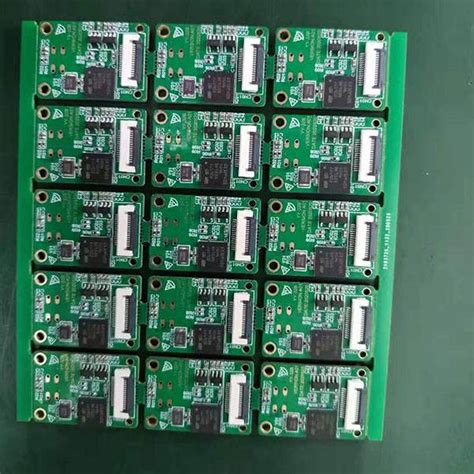
Cost Benefits of Advanced Assembly Methods
The implementation of advanced flex PCB SMT assembly techniques offers numerous cost benefits, positioning companies to achieve greater competitiveness in the fast-evolving electronics sector. By leveraging innovative approaches in pcb assembly, manufacturers can significantly reduce production time and material waste. For instance, the use of automated processes in surface mount technology (SMT) enables tighter tolerances and less rework, which directly correlates to lower labor costs and improved yield rates. Furthermore, flexible PCBs allow for more compact designs, which not only save precious space in devices but also lead to substantial reductions in material costs related to traditional rigid boards. As companies increasingly adopt these advanced methods, they can expect not only immediate savings but also long-term benefits through enhanced product differentiation and lower operational expenses. Overall, integrating these cost-efficient pcba strategies provides a pathway for manufacturers to optimize their production processes while delivering higher value to their customers.
Future Trends in Flexible PCB Technology
As the demand for compact, high-performance electronic devices continues to rise, future trends in flexible PCB technology are poised to revolutionize the landscape of PCB assembly. One prominent trend is the integration of advanced materials that not only improve durability but also enhance conductivity, enabling PCBA for applications in extreme environments. Furthermore, the evolution of manufacturing processes embraces higher levels of automation and precision, which streamlines production and reduces lead times. The incorporation of machine learning algorithms in assembly lines is another innovative stride, optimizing workflows and minimizing errors associated with traditional methods. Additionally, we are witnessing a shift towards a more sustainable approach with the adoption of eco-friendly materials and practices that reduce waste during flex PCB SMT assembly. As these technologies converge, they promote not only improved performance but also significant cost reductions, making flexible PCBs more appealing for various industries. With such advancements on the horizon, the future of flexible PCB technology is undeniably vibrant and promising for manufacturers striving to meet the evolving challenges of modern electronics.
Case Studies: Successful Implementations in Industry
The integration of flex PCB SMT assembly has significantly transformed the landscape of various industries, showcasing its effectiveness through a range of successful implementations. For instance, in the automotive sector, manufacturers have adopted flexible PCBs to design lightweight, compact electronic systems that enhance vehicle performance and fuel efficiency. A notable case involved a leading automotive supplier that utilized pcb assembly techniques to create a highly flexible control unit, resulting in a 30% reduction in weight compared to traditional rigid boards. Similarly, in the medical device industry, companies are harnessing pcba technologies to produce miniaturized equipment that improves patient care and diagnostics. One particular case study highlighted how a medical device manufacturer achieved significant space savings and reliability improvements by implementing advanced SMT assembly methods for their wearable health monitors. These examples underscore the extensive benefits of adopting innovative flexible PCB strategies within diverse applications, driving efficiency and contributing to the ongoing trend toward miniaturization in electronics. As industries continue to explore these advancements, the future looks promising for those who leverage the flexibility and cost-efficiency of modern SMT assembly techniques.
Conclusion
In summary, advancements in flex PCB SMT assembly techniques have significantly transformed the landscape of modern electronics manufacturing. The shift towards the use of flexible printed circuit boards (PCBs) has facilitated the development of lightweight, compact, and durable electronic devices. By implementing state-of-the-art assembly methods, manufacturers have streamlined pcb assembly processes, resulting in enhanced production efficiency and reduced operational costs. The integration of automation and precision techniques within PCBA not only improves assembly accuracy but also minimizes waste and the potential for defects. Moreover, these innovative approaches contribute to the ongoing trend of miniaturization, enabling designers to explore new frontiers in device functionality without compromising on performance. As this technology continues to evolve, it is clear that flex PCBs will play an increasingly vital role in shaping the future of electronics, offering myriad benefits that cater to an ever-demanding market.

FAQs
What is flex PCB SMT assembly?
Flex PCB SMT assembly refers to the process of assembling surface mount technology (SMT) components onto flexible printed circuit boards (PCBs). This method allows for the creation of lightweight and adaptable electronic devices that can fit into various configurations.
What are the benefits of using flex PCBs in electronics manufacturing?
The use of flex PCBs in pcb assembly offers numerous benefits such as reduced weight, increased durability, and the ability to save space within electronic devices. Their design flexibility also enables innovative product designs that traditional rigid PCBs cannot achieve.
How do innovations in PCB design impact SMT assembly?
Innovations in flexible PCB design contribute significantly to enhancing the efficiency of pcba processes. Advanced materials and techniques can lead to better thermal management, improved electrical performance, and reduced production costs.
Are there any special considerations for flex PCB SMT assembly?
Yes, during pcb assembly, it’s essential to consider factors such as the mechanical properties of flexible substrates, proper handling techniques, and the selection of suitable solder materials that accommodate bending and flexing during operation.
What trends are shaping the future of flexible PCBs?
The future trends include advancements in materials, growing demand for miniaturization in electronics, and increased utilization in emerging applications like wearables and IoT devices. These factors indicate a sustained growth trajectory for flexible PCB technology.
For more insights on pcb assembly, please visit this link.



